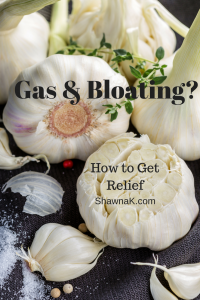If you often experience digestive stress after eating certain foods and the discomfort is so severe that it affects your day-to-day activities, you may help yourself by reducing FODMAP foods.
There is a link between foods and digestive disorders and there is a good chance that FODMAPs – small carbohydrates in certain foods – are the culprit.
What are FODMAPs?
They are:
- Fermentable – meaning they are broken down (fermented) by bacteria in the large bowel
- Oligosaccharides – “oligo” means “few” and “saccharide” means sugar. These molecules are made up of individual sugars joined together in a chain
- Disaccharides – “di” means two. This is a double sugar molecule
- Monosaccharides – “mono” means single. This is a single sugar molecule
- Polyols – these are sugar alcohols
Basically, here’s what happens….
- Eat food FODMAP containing food.
- Some FODMAPs may pull water into the small intestine, causing diarrhea
- In those with IBS, FODMAPs can travel to the large intestine (gut) largely undigested.
- When “unhealthy” bacteria interact with FODMAPs in the gut, they use FODMAPs as energy to survive. The bacteria rapidly ferment FODMAPS and produce gas as a result. This causes a range of symptoms such as bloating, gas and pain.
- Different people are sensitive to different FODMAPs, so it’s important to identify which ones are the culprit for you.
Here are a few common foods that may be causing issues with your belly and you may want to limit intake to see if it makes a difference with gas and bloating…
VEGETABLES – HIGH FODMAP
- Asparagus
- Artichokes
- Cauliflower
- Garlic
- Leek (white bit)
- Onions
- Mushrooms- all other types
- Peas
FRUITS – HIGH FODMAP
- Apples
- Apricot
- Avocado (small quantities may be tolerated)

- Bananas, ripe
- Blackberries
- Cherries
- Grapefruit
- Mango
- Nectarine
- Peaches
- Pears
- Plums
- Raisins and sultanas
- Watermelon
CEREALS, GRAINS AND FLOUR – HIGH FODMAP
- Barley
- Besan flour
- Cereal, muesli or granola with wheat or dried fruit
- Chick pea flour
- Coconut flour
- Rye flour
- Soy flour
- Wheat and rye flour, includes bread, cakes,biscuits, cookies, muffins etc.
PASTA, RICE AND NOODLES – HIGH FODMAP
- Cous cous
- Gnocchi
- Pasta
- Noodles- egg, udon, ramen, wheat
- Semolina
DAIRY AND ALTERNATIVES – HIGH FODMAP
- Cheese- cream cheese
- Cow’s milk
- Goat milk
- Oat milk
- Sheep’s milk
- Soy milk made with soy beans
MEAT, EGGS, LEGUMES AND SOY PROTEIN – HIGH FODMAP
- Most sausages
- Processed meats with high FODMAP ingredients
- Baked beans
- Black beans
- Cannellini beans
- Most bean mixes
- Tofu- silken
- Soy beans
NUTS AND SEEDS – HIGH FODMAP
- Cashews
- Pistachios
SWEETENERS, SAUCES AND CONDIMENTS – HIGH FODMAP
- Agave
- Curry paste
- Gravy mix (most)
- High Frucose Corn
- Syrup (HFCS)
- Honey
- Hummus
- Inulin
- Isomalt
- Jam- real strawberry and marmalade is the exception
- Maltitol and mannitol
- Pasta sauces- most
- Sorbitol and xylitol
- Tzatziki
Good News…
FATS AND OILS, HERBS AND SPICES
All herbs and spices, fresh and dried are low FODMAP. The exception is garlic and onion.
All fats and oils are low FODMAP, including butter, avocado, coconut and peanut oil. Garlic-infused and onion-infused oils are also low FODMAP (they retain flavors without the FODMAP compounds).
You can do an elimination diet to help you determine what FODMAPs may be causing issues for you.
If you need some support, I’m here for you. Fill in this questionnaire and then let’s talk about some solutions.




